- Home
- Succulents
- Cotyledon
- Cotyledon orbiculata var. flanaganii
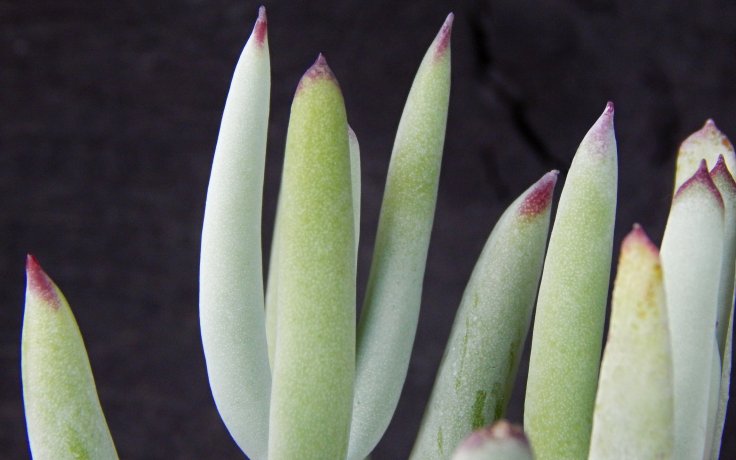
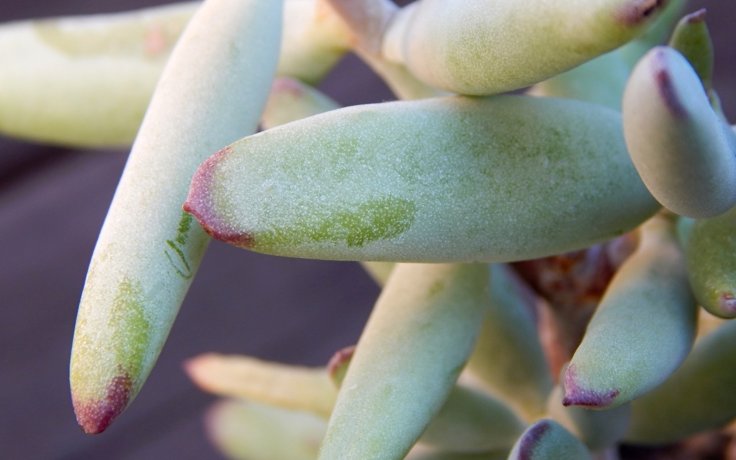
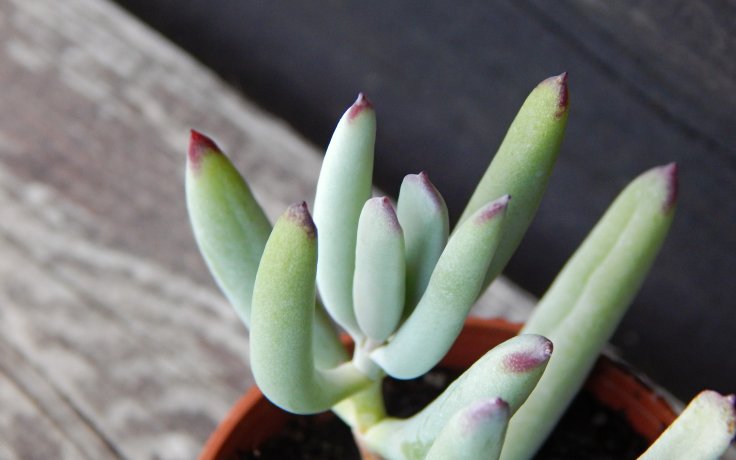
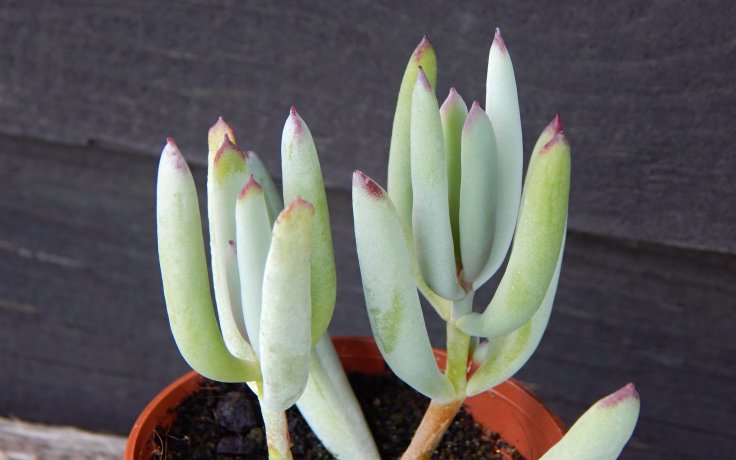
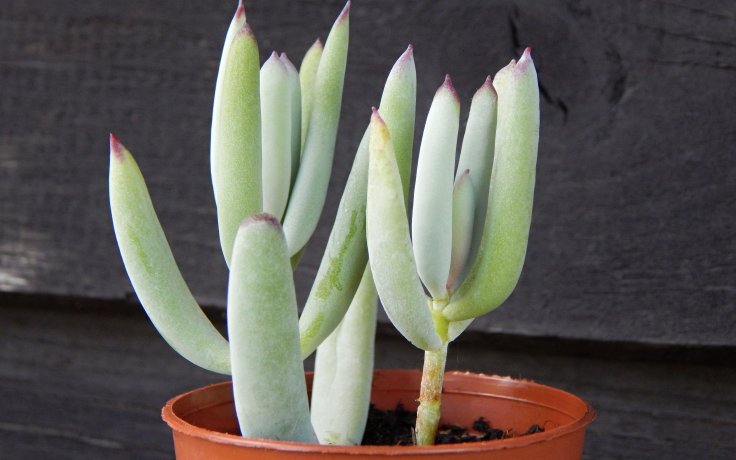
Cotyledon orbiculata var. flanaganii
Place in full sun or partial shade.
Water regularly, always a few days after the substrate has dried out. Reduce watering in winter.
It likes room temperatures, can withstand short-term temperatures around 0 °C, but the plant is not hardy.
The warmed juice of the leaves is used in its homeland as a drop for toothache or earache, or to treat epilepsy. However, the juice must be safely treated. Do not try it at home!
This morphological variant of Cotyledon orbiculata is also known as Cotyledon flanaganii subsp. flanaganii. It is native to the lower Kei River in the Eastern Cape Province and grows on gravel slopes in scrub vegetation. It is valued in folk medicine in its homeland and is used to heal warts, corns, ulcers, inflammations and even ear diseases. The warmed juice of the leaves is used as drops for toothache or earache and to treat epilepsy. However, do not try it at home.
The leaves of this plant are cylindrical, tapering to a point and reaching a total length of up to 8 cm. They have a red pattern around the edge and a waxy layer on the surface, which gives them a whitish-green colour. The plant is a sparsely branched and woody shrub with spreading branches. The lower leaves dry out over time, so I recommend continuous removal of dry leaves. Shrubs can reach up to one metre in height in the wild.
The plant bears showy bell-shaped flowers on long stems. These appear from September to January and are bright red in colour.
Growing this plant is easy if you give it plenty of sunlight. Stem formation can be accelerated in spring by occasional pruning. In this way we can create a small succulent bonsai. Do not fertilise Cotyledon orbiculata var. flanaganii to maintain its natural appearance. At first sight it doesn't seem very interesting, but if it blooms it will dazzle every guest who visits you.